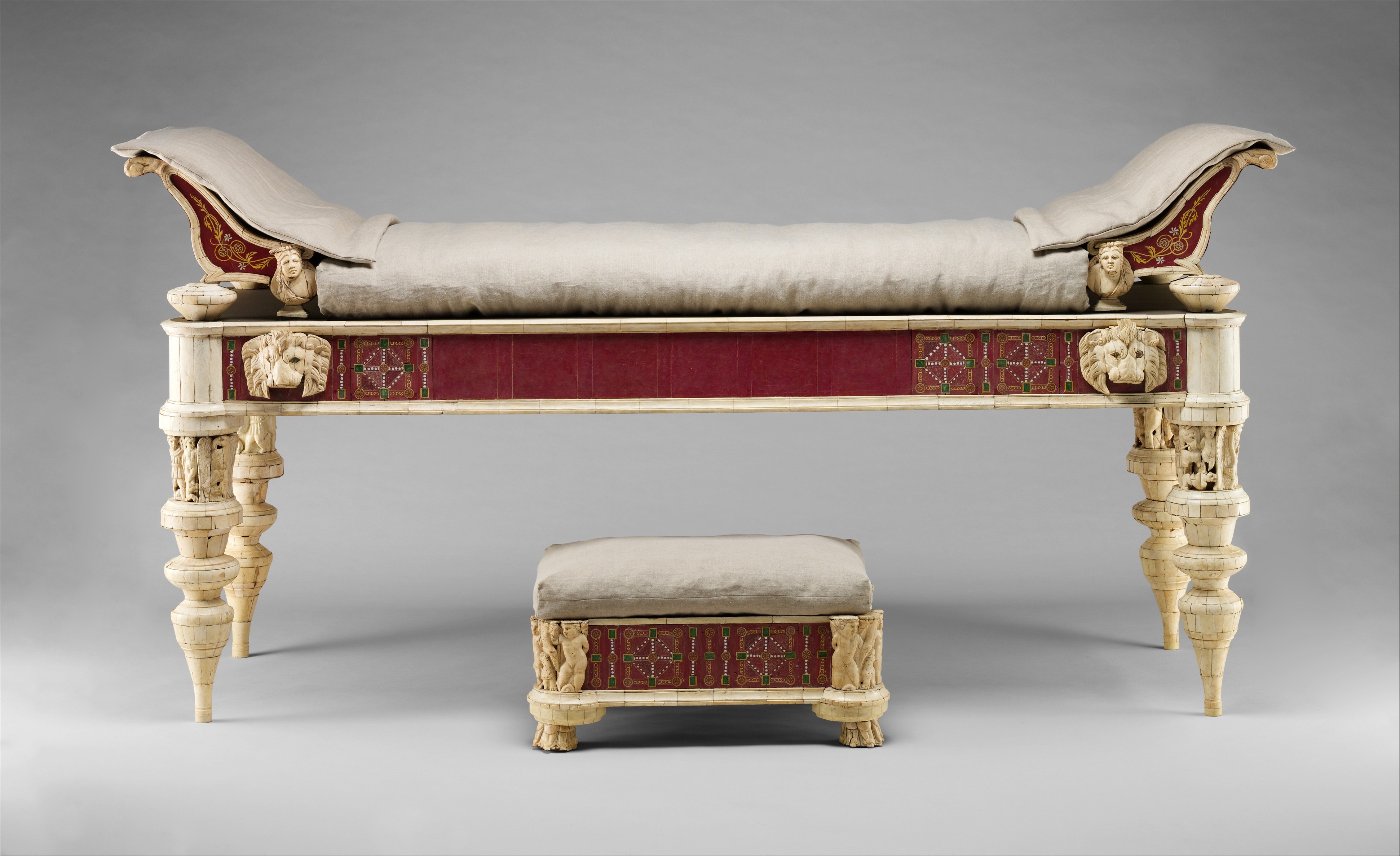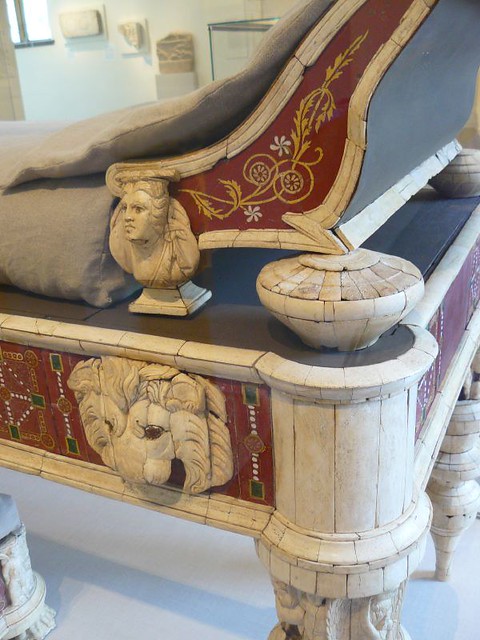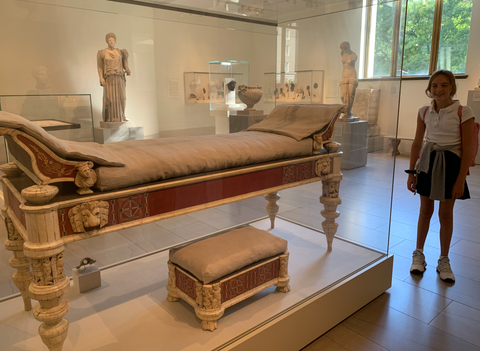The ancient Roman world was one of luxury, sophistication, and artistic mastery, and few artifacts illustrate this better than the Roman couch and footstool from the Villa of Lucius Verus, dating to the 2nd century AD. This remarkable piece of furniture, now on display at The Metropolitan Museum of Art in New York, offers a rare glimpse into the refined lifestyle of Rome’s aristocracy.
A Symbol of Roman Luxury and Status
In ancient Rome, couches were not just for resting; they were an essential part of social life and dining customs. Wealthy Romans would recline on these elegant pieces, particularly in the triclinium (dining room), where lavish banquets were held. Unlike the common people, who ate seated, the elite reclined while dining, a practice that originated with the Greeks and became a hallmark of Roman sophistication.

The couch from the Villa of Lucius Verus reflects the opulence of the Roman imperial class. While the cushions seen today are modern reconstructions, they are crafted in a style based on frescoes and mosaics from Pompeii and Herculaneum, which depict similar furniture adorned with rich fabrics and elaborate decorations.
Craftsmanship and Design
The Roman couch and footstool would have been constructed from the finest materials available, often a combination of wood, ivory, and bronze, with intricate carvings and inlaid decorations. The craftsmanship was not just about function but also about displaying wealth and status.

The couch’s reclined design allowed for a comfortable lounging position, further reinforcing the leisurely lifestyle of the Roman elite. The accompanying footstool, a common feature in Roman furniture, added both comfort and elegance, completing the luxurious aesthetic.
Lucius Verus and His Extravagant Lifestyle
Lucius Verus, who ruled as co-emperor with Marcus Aurelius (161–169 AD), was known for his love of luxury, feasts, and lavish surroundings. Unlike his more disciplined counterpart, Marcus Aurelius, Verus indulged in the grandeur of imperial Rome, surrounding himself with exquisite furnishings, fine textiles, and elaborate decorations.

The couch and footstool from his villa serve as a direct link to this extravagant lifestyle. They are not just artifacts; they are windows into a world where opulence was a mark of power and where even the act of reclining was a statement of elite status.
A Testament to Roman Elegance
Today, this beautifully preserved Roman couch and footstool stand as a testament to the artistry, luxury, and grandeur of ancient Rome. They offer more than just a glimpse of furniture from the past; they tell a story of power, culture, and the refined tastes of Rome’s elite.

Visitors to The Met in New York can now admire this extraordinary piece, imagining the banquets, conversations, and lavish lifestyles that once surrounded it—a true symbol of Rome’s enduring legacy.

